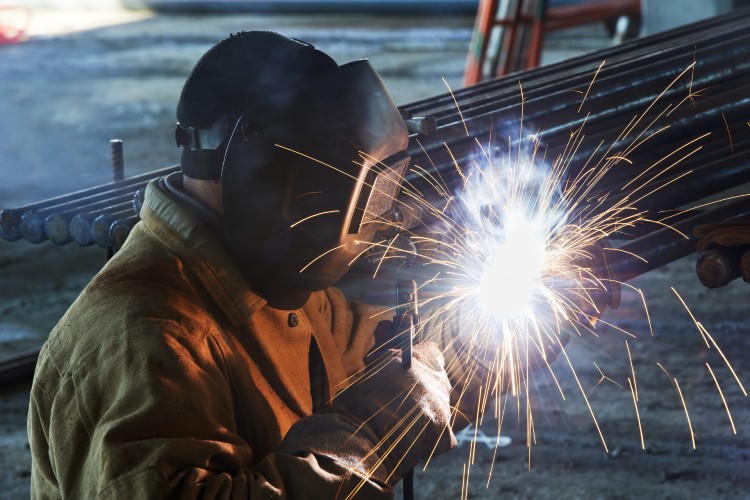If you or a loved one recently suffered burns or other types of personal injury in a fire, you're likely asking yourself:
Our experienced burn injury lawyers can answer these and any other questions you may have.
Contact us now for a free consultation. Get the answer to your legal questions free of cost. And if you decide to retain the Banville Law burn injury lawyers, rest assured that you won't owe any legal fees unless we win and recover compensation on your behalf.
If you recently suffered burn injuries, it's probable that you're unsure about what the best next step is. Victims of burn injuries, as well as anyone else who has suffered a personal injury in the past, is right to feel lost in the days and weeks after their trauma transpires.
In most cases, medical expenses have already started to accumulate. To make matters worse, burn victims are often forced to miss work, so lost wages become a factor. Of course, the monthly bills don't stop coming in.
Insurance companies will call and pressure victims to settle. Collections agencies may start harassing them, too. There's seemingly no end in sight and no help in lifting the weight off victims' shoulders.
A burn injury lawyer like the ones that form part of the Banville Law Firm can manage these and any other aspects of serious burns injuries cases. From negotiating with the insurance companies, to fighting in court for a favorable jury verdict, to seeking damages via a wrongful death lawsuit, contact us today to arrange your free consultation and take the first step towards achieving justice.
Use can use the following links to visit our local New York law office pages:

The American Burn Association, or ABA, is a group dedicated to furthering research into "burn-related research, education, care, rehabilitation, and prevention."
Through their research, they've discovered that over 450,000 Americans require medical treatment for burn injuries. Naturally, the extent of the burns likely spans a standard distribution. Yet, this number only considers victims in the United States who sought medical treatment for their injuries.
Without a doubt, there could be countless others who do not seek professional healthcare because they feared they would be met with overwhelming medical bills.
Unfortunately, the fact of the matter is that these burn injury victims are likely right to be concerned about substantial medical expenses. Just in the year 2010, more than $1.5 billion was spent on treatment costs for burns.
High-quality healthcare in the United States can be extremely expensive. But when it comes to injuries as delicate as those caused by a fire, such top-of-the-line medical attention should not be reserved only for those who can afford it. Poor treatment, or no treatment at all, can lead to long-term complications that may have been avoided with proper burn injury care.
If the quality of the treatment received after suffering burn injuries determines the success of a victim's recovery, then every victim should have access to the best healthcare there is. This should be a given, whether talking about someone with severe burns or another who may have only missed a week or two of work while recovering.
Through a civil lawsuit, and with the help of a team of experienced burn injury lawyers, victims are given a chance to fight for the compensation that allows them to receive the medical attention they deserve, along with other types of compensation.

The nature and extent of a burn will often play a large part in the final value of a fire injury case. For example, chemical burns, thermal burns, and contact burns may also produce different types of injuries.
Varying degrees of personal injury call for equally varied treatment regimens and, ultimately, some very different medical expense bills. Yet most personal injury cases overlap in the types of compensation that is awarded.
How much compensation you get for a burn injury will always depend on the specific extent of your damages, which in this case can include:
Medical costs make up a large chunk of compensation awarded to victims. This is because treatment of serious burns, where numerous layers of skin are damaged, is very expensive.
Yet it's not only the initial healthcare expenses that must be considered. The recovery process for victims can be quite extensive when you consider that most require physical therapy to regain their mobility.
Others may also require ongoing medication or additional treatment, as well as visit to a mental health professional for help in dealing with mental anguish.
While the cost of treating emotional trauma is covered by the previous section, victims and their loved ones can also be compensated for the emotional distress they've suffered.
Nationwide, lost wages make up one of the largest expenses resulting from fire injuries. In 2010, more than $5 billion in costs were associated with lost income as a result of fire injury.
Those afflicted with a severe burn can suffer deformities on any part of their body. Even minor burns can cause scarring which in turn can prevent an individual from recovering 100%.
Such loss of mobility often results in losing the ability to perform activities that one enjoys; this is often categorized under loss of enjoyment of life and can be considered for compensation.
Loss of consortium speaks to the loss of a partner, such as is the case in wrongful death claims. This type of damage is perhaps one of the most intangible, and yet one of the most painful that victims endure.
How much compensation are you entitled to after a fire injury? Through a free consultation, you can stop guessing how much your burn injury lawsuit is worth and take the first step towards finding out how much financial compensation you may be truly entitled to.
Most individuals have already heard the terms "third-degree burns" or "first-degree burns" being used in the past. Yet, not everyone understands the important differences that separate these types of burns and which may ultimately mark the difference between life and death.
First-degree burns are the most common types of burns. As a result, they are the least harmless. This is because only the top layer of skin, the epidermis, is damaged.
The human body is quite adept at recovering from such burns; in fact, you likely know this from first-hand experience! We say this because mild sunburns are first-degree burns. They could cause some pain and reddening of the skin but do not go further than this.
A first-degree burn can be treated with widely-available skin lotions. These usually provide some relief from the pain but are not necessary to recover.
Second-degree burns are when the layer of skin below the epidermis, the dermis, becomes damaged. Once more, in this type of burn as in the last, the skin can become red, swollen, and even blister.
With second-degree burns, since the damage is deeper than first-degree burns, it is often recommended to use prescribed creams such as antibiotic ointments to treat this class of burn. Deeper damage means that more important tissues suffer, and the use of an antibiotic ointment can help prevent potentially-deadly infections.
Second-degree burns do not necessarily require professional medical care. However, a supervising doctor can help manage pain with medication and also help avoid scarring. For this reason, anything past a first-degree burn should always be consulted with a healthcare professional as soon as possible.
Third-degree burns, also known as full-thickness burns, are quite serious. Not only are the epidermis and the dermis layers of skin affected in this type of burn, but underlying tissues as well.
Third-degree burns require medical care to prevent them from becoming infected. A health professional can also prescribe pain medication to help the patient cope with the severe discomfort caused by such extensive damage. In the most extreme cases, third-degree burns may require a skin graft.
Fourth-degree burns are not talked about often in regular parlance. Perhaps because they are rarer, or also possibly due to the fact that they are so gruesome.
With this type of fire injury, the skin is completely destroyed. Damage extends past muscles, tendons, nerves, and down to the bone. Ironically enough, the area of the skin that suffers a fourth-degree burn does not hurt because the nerves are seriously damaged.
However, any surrounding tissues where nerves remain will definitely lead to extreme pain and suffering. Fourth-degree burns are undoubtedly life-threatening; even with experienced medical supervision, the victim of fourth-degree burns may not survive.

The physical damage that burn injury victims suffer is usually present and clear. However, what's less tangible is the traumatic pain and suffering that comes not only with the initial burn injury but with the recovery process as a whole.
Yet, just because pain & suffering aren't as tangible as the cost of replacing damaged property or medical expenses, this does not mean that victims can't receive financial compensation that takes them into account.
In fact, pain & suffering are some of the most common types of reasons for which compensation is awarded in personal injury claims. The case is no different when it comes to a burn injury lawsuit.
Wondering how much compensation you may be able to achieve through a lawsuit? Through a free consultation, the experienced burn injury attorneys at Banville Law can explain how pain & suffering may play a part in your final claim value.
Tragically, the same workplace that helps employees put food on the table for a loved one can be the same setting for a serious burn injury. Some of the most common types of work burns that occur include:
These burns can cause severe pain if not total death. However, it may not be possible to seek financial compensation via a lawsuit.
Instead, workers' comp claims may be the only avenue through which to receive benefits. All cases are different, so it's best to discuss your specific case with law firms experienced in the specific segment of the law.